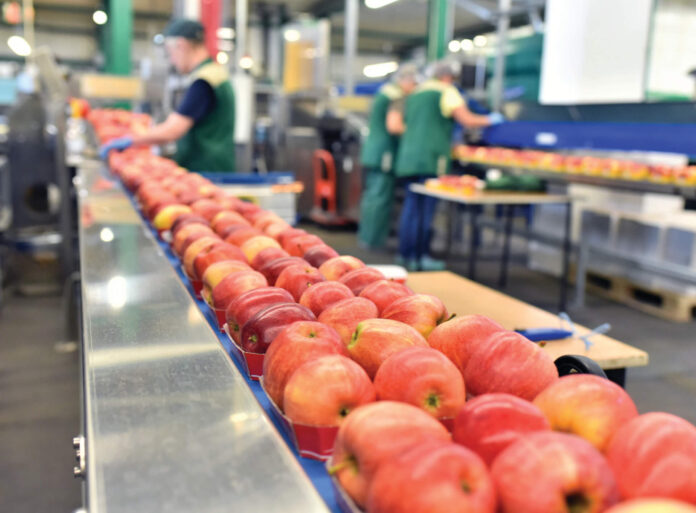Lot auditing is an effective tool used in the produce industry to ensure that products meet mandated quality standards before hitting store shelves. But without proper tools and techniques, lot auditing can be time-consuming and difficult, leading to potential product recalls or other headaches down the line.
In this article, we’ll cover how to properly conduct lot audits in the produce industry so that you can operate your business with confidence.
Need a better way to track your produce and trace them throughout the supply chain? Consider making use of technological solutions like https://usesilo.com/products/lot-tracking-traceability, which increase visibility and make the recall process less of a headache.

Understand the purpose of lot audits in the produce industry
Lot audits serve several important purposes in the produce industry.
For one, they ensure product safety and quality. Regular lot auditing helps producers identify and address any issues with product quality or safety before products are distributed, reducing the risk of recalls or customer complaints.
They also verify compliance with produce industry regulations and standards. Produce suppliers must comply with strict industry standards around attributes like size, color, ripeness, damage, and more. Lot auditing confirms that suppliers are meeting these standards with each shipment.
Lot audits also allow for the tracking of supplier performance. The results of regular lot audits provide valuable data on supplier performance that can be used to evaluate and potentially replace underperforming suppliers.
The different types of lot audits
The produce industry conducts several types of lot audits to ensure quality and safety, including:
- Pre-shipment lot audits – These audits review a sample of a grower’s produce before it is shipped to verify size, grade, quality, and safety specifications are met
- In-transit audits – These audits may monitor the temperature of perishable produce in trucks to ensure proper refrigeration
- Receiving audits – These audits double check a shipment when it arrives at a terminal market or retailer to catch any issues before the produce is sold
- Post-shipment lot audits – These audits verify that produce sent to customers matches the quality and grade specified by the customer
No matter the type of audit, their general aim is to help reduce waste and risk, ensuring consumers receive fresh produce that’s safe to consume.

The standard operating procedure for conducting lot audits
To conduct an effective lot audit, a standard procedure is usually carried out, consisting of the following:
- Select a random sample of the lot
- Inspect the sample for key attributes (size, color, ripeness, damage, etc.)
- Compare the sample against industry standards and your own specifications
- Note any issues or non-compliance
- Calculate an acceptance or rejection rate for the lot
- Take appropriate action based on the audit results (accept, reject, rework, etc.)
- Document the audit results
By following a standard operating procedure for lot audits, you can ensure that all audits are conducted consistently and accurately.
Time and care should be taken to develop a proper audit plan (less so for accounting purposes and more so for inventory purposes). This will help you maintain a high level of quality for your produce and reduce the risk of product recalls or customer dissatisfaction.
Establishing verification and validation criteria for lot audits
Verification and validation criteria are key components of any lot audit. These criteria help producers determine which attributes should be audited during the audit process. They also provide a standardized way to measure compliance with industry standards and internal specifications.
Producers typically select verification and validation criteria based on their specific operations, products, and customers. For example, a producer that ships produce to grocery stores may have different criteria than one shipping to restaurants. Some common criteria include size, color, ripeness, damage level, maturity level, and quality characteristics like taste or smell.
Once the criteria have been established, producers can create an audit plan that outlines which attributes will be audited at each stage of the supply chain. This plan should be reviewed and updated regularly to ensure that it reflects any changes in the industry or the producer’s own operations.

Train personnel on proper documentation and reporting requirements
Once the audit plan is in place, personnel should be trained on proper documentation and reporting requirements. Personnel should understand how to document their findings during lot audits, as well as how to record any discrepancies or issues that arise.
Documentation standards should include instructions for documenting all parameters being audited and capturing key metrics such as acceptance or rejection rate.
Producers should also create standard operating procedures for reporting audit results. This should include a system for filing reports and communicating the findings to other divisions of the company, as well as to relevant suppliers or customers.
Reports should be reviewed regularly to ensure compliance with industry standards, customer specifications, and internal processes.
Conclusion
Conducting lot audits is a key step for producers in the produce industry to ensure quality and safety standards are met.

By establishing clear verification and validation criteria, training personnel on proper documentation and reporting requirements, and regularly reviewing audit results, producers can create an effective audit process that helps reduce waste and risk while ensuring customers receive safe, fresh produce.





![Calgary’s Hottest Neighborhoods for Luxury Homebuyers [2024]](https://thewashingtonote.com/wp-content/uploads/2024/04/Calgary-324x160.png)



